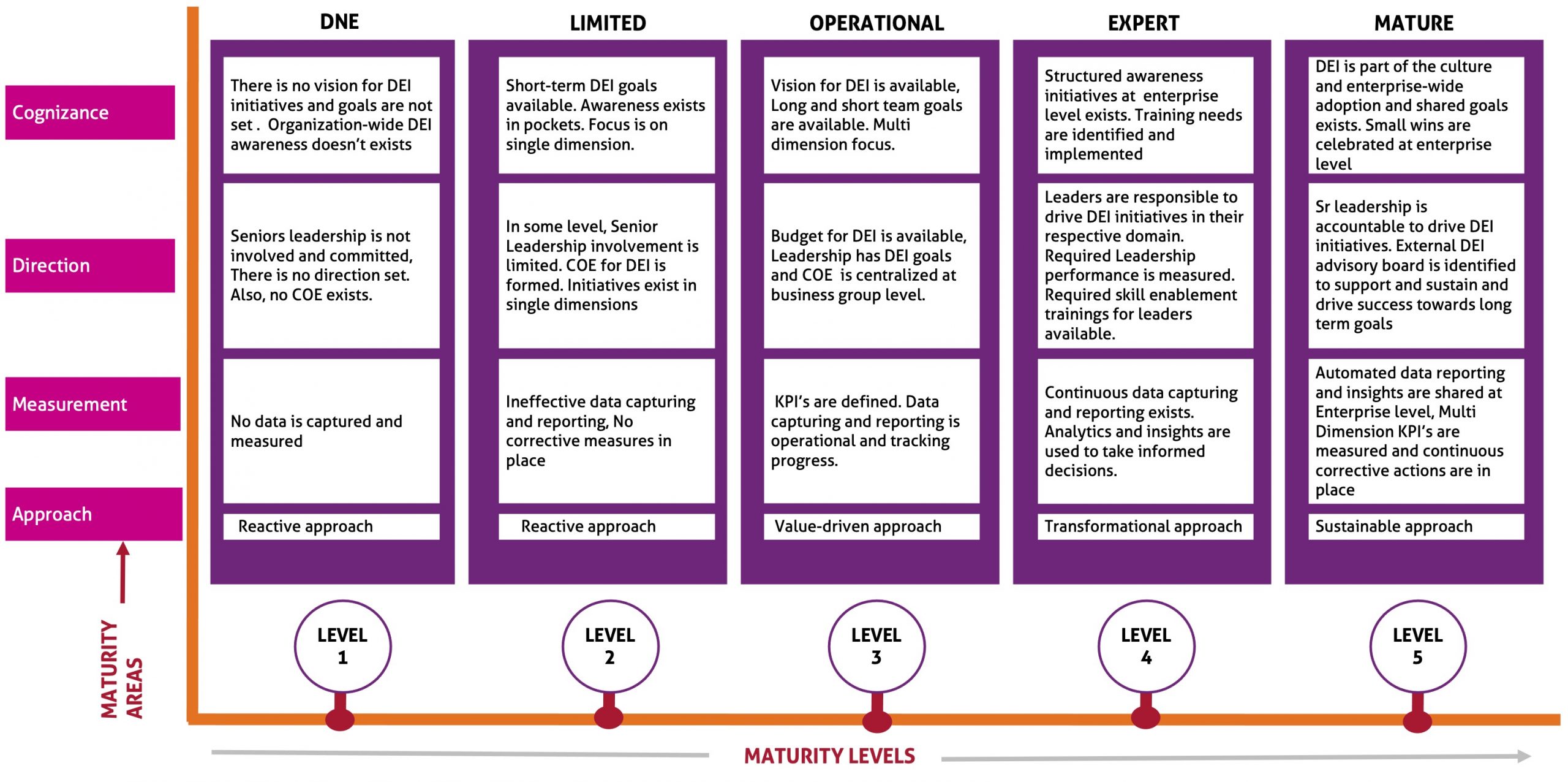Diversity, Equity, And Inclusion – Using A Data-Driven Approach As An Engine For Mindset Change
Organizations that inculcate diversity and inclusion in all facets of their business statistically outperform their peers. A study conducted by McKinsey & Company found that ethnically diverse companies are 35% more likely to have financial returns above their respective national industry medians. Gender-diverse companies are 15% more likely to outperform their respective national industry medians.
There are many research articles and real-life experiences, which indicate that improving Diversity, Equity, and Inclusion (DEI) can harvest belongingness, thus helping businesses grow, in terms of financial performance, talent attraction and retention, business performance, and customer satisfaction. Diverse teams perform well and are more productive. When employees feel a sense of belonging, they engage better and collaborate effectively.
The Will and the Way!
In practice, adoption requires behavioral change. Behavior science states that a behavior change requires variation along two dimensions: the WILL and the WAY. The Will echoes our wants or drives to act, while the Way replicates our means to perform, and the information and skills we induce to act.
Data-driven insights become more powerful when used as an engine for change. A data-driven approach helps us understand what we are addressing to solve set goals that provide the motivation to act, thus increasing the WILL to change.
Did you know, at the British Broadcasting Corporation (BBC)1, a mass effort to increase the number of women in journalism has transformed the way they work? It works with a shared goal and proactively tracks the data to derive insights to work towards the common objective. BBC’s story is a notable example of making behavioral and organizational change Easy, Attractive, Social, and Timely (EAST) through a data-oriented approach.
Data-driven mindset – The way forward for DEI initiatives to be successful and sustainable:
A data-driven mindset helps make conscious decisions. It helps structure the problem understanding and consumption of data as an insight to make decisions. It is always a good practice to start small and measure success periodically while ensuring that the long-term are goals intact. While you start your DEI initiatives, data and analytics play a crucial role in helping you understand where you are and the direction you need to take. Here is our point of view to make DEI initiatives successful and sustainable:
- Assess Organization Maturity:
LTIMindtree’s DEI maturity model helps understand the level at which an organization is operating, and the capabilities and initiatives to take to move up the maturity curve and be sustainable. You can start here.

- Make C-Suite Leadership as Sponsors:
Any business initiative fails if there is no sense of urgency and accountability and sponsorships. Include C -suite leaders to define DEI priorities and set a shared goal for the organization. At this stage, assess the current dimensions of DEI drivers and identify missing aspects, and consider them to be part of your overall goals. Drive this through the senior leadership. - Socialize Across Levels:
Create awareness around DEI goals across all levels in the organization. Also, re-emphasize frequently to engage and involve people to commit. Use data-driven stories to emphasize the importance. - Collect Relevant Data and Standardize the Data Collection Process:
Develop a standardized data collection system or process while collecting data. Also, try collecting relevant sets of data – for instance, collect data around DEI drivers like gender, ethnicity, sexual orientation, education, age/generation, disability status, pay parity, performance ratings, org structures, the voice of employees, etc., which are in line with the organization level DEI goals. - Bring in Data Experts to the Team:
Build your team to be data-oriented. They should be able to connect various sources and systems to drive insights and report them to the senior leadership to drive the impact and actions. - Measure your Success:
Collecting data is not enough. Measuring and tracking the progress is an important aspect to take the right decisions. Identify milestones, track (short/long-term goals), and report them. - Celebrate Success:
Celebrate and communicate small wins, and share them across the organization. Communicating with data stories influences a mindset change in the long run.
Conclusion:
DEI at the workplace is a continuous process. If organizations are interested in reaping its benefits, they need to work towards a mindset change and make it a part of the culture. A data-driven mindset helps in assessing the current state and way forward for an organization to craft cohesive DEI strategies and be more sustainable. In addition, setting up clear goals (short and long-term) and measuring them will help make these initiatives more robust. Measuring, reporting, and communicating DEI progress across the organization will influence a mindset change and is the way forward.
More from Amit Motiwale
Backup is boring, this was and in fact, sometimes still is the general description of the overall…
Latest Blogs
Introduction What if training powerful AI models didn’t have to be slow, expensive, or data-hungry?…
Pharmaceutical marketing has evolved significantly with digital platforms, but strict regulations…
Leveraging the right cloud technology with appropriate strategies can lead to significant cost…
Introduction The financial industry drives the global economy, but its exposure to risks has…




